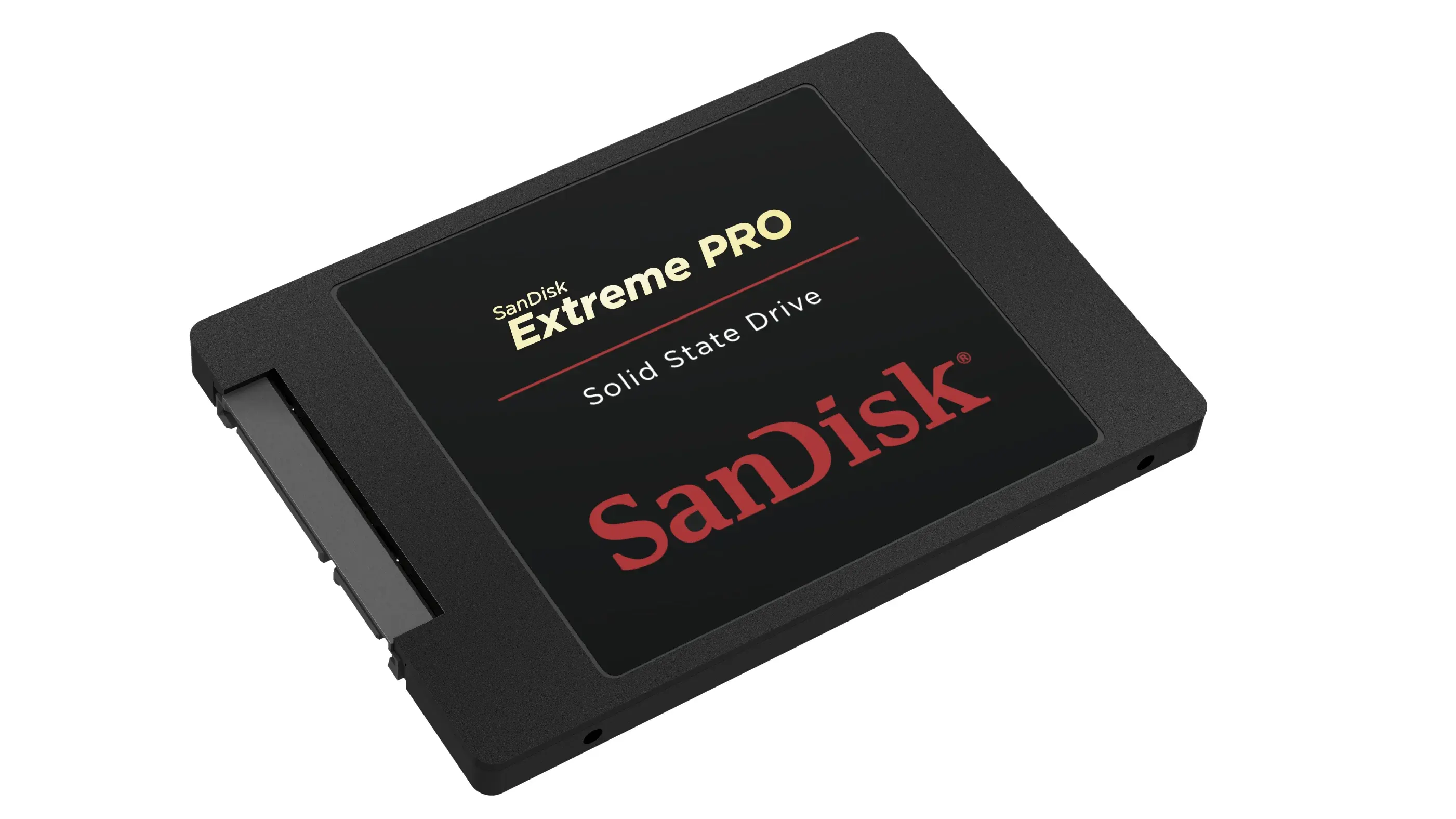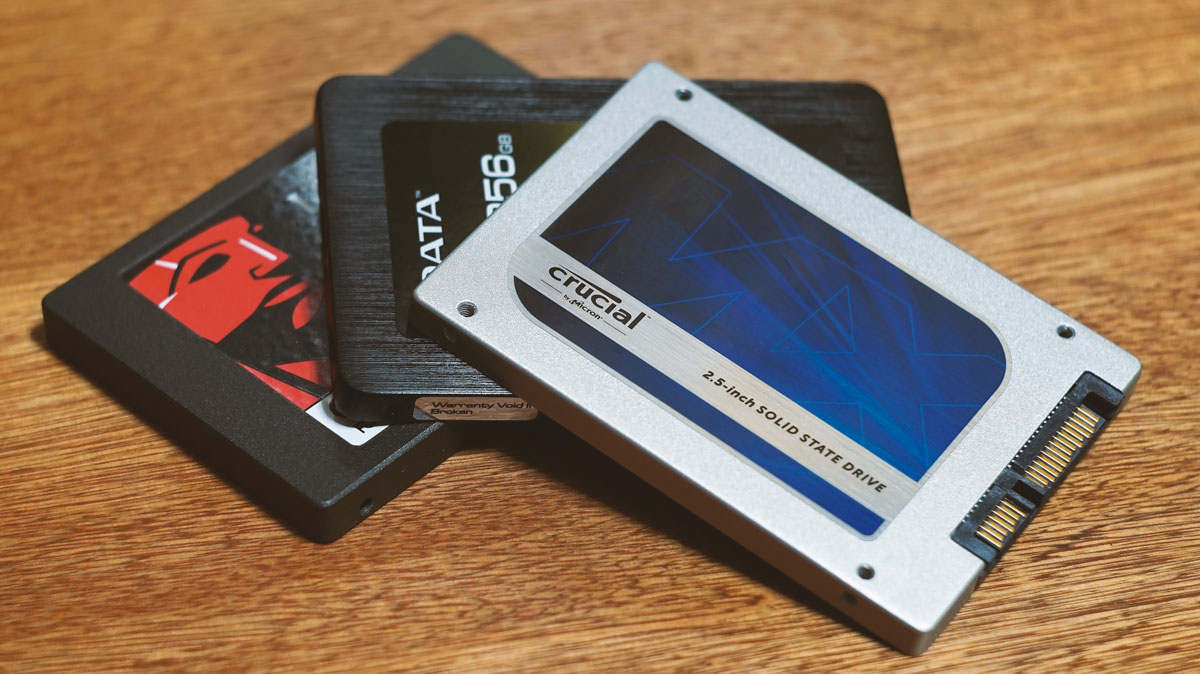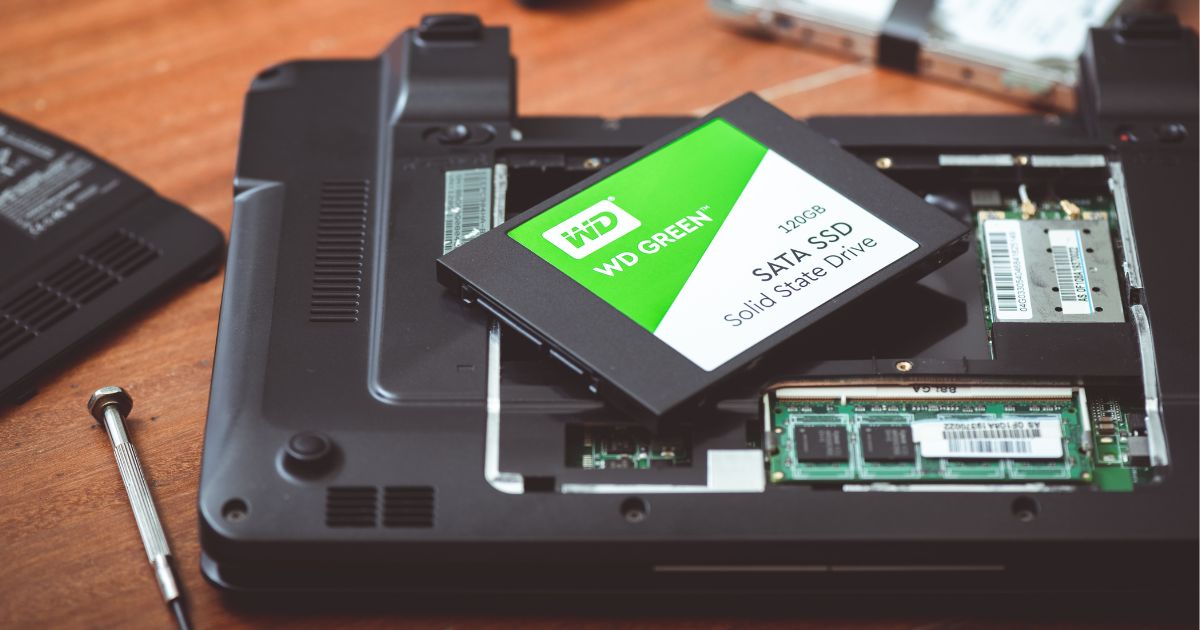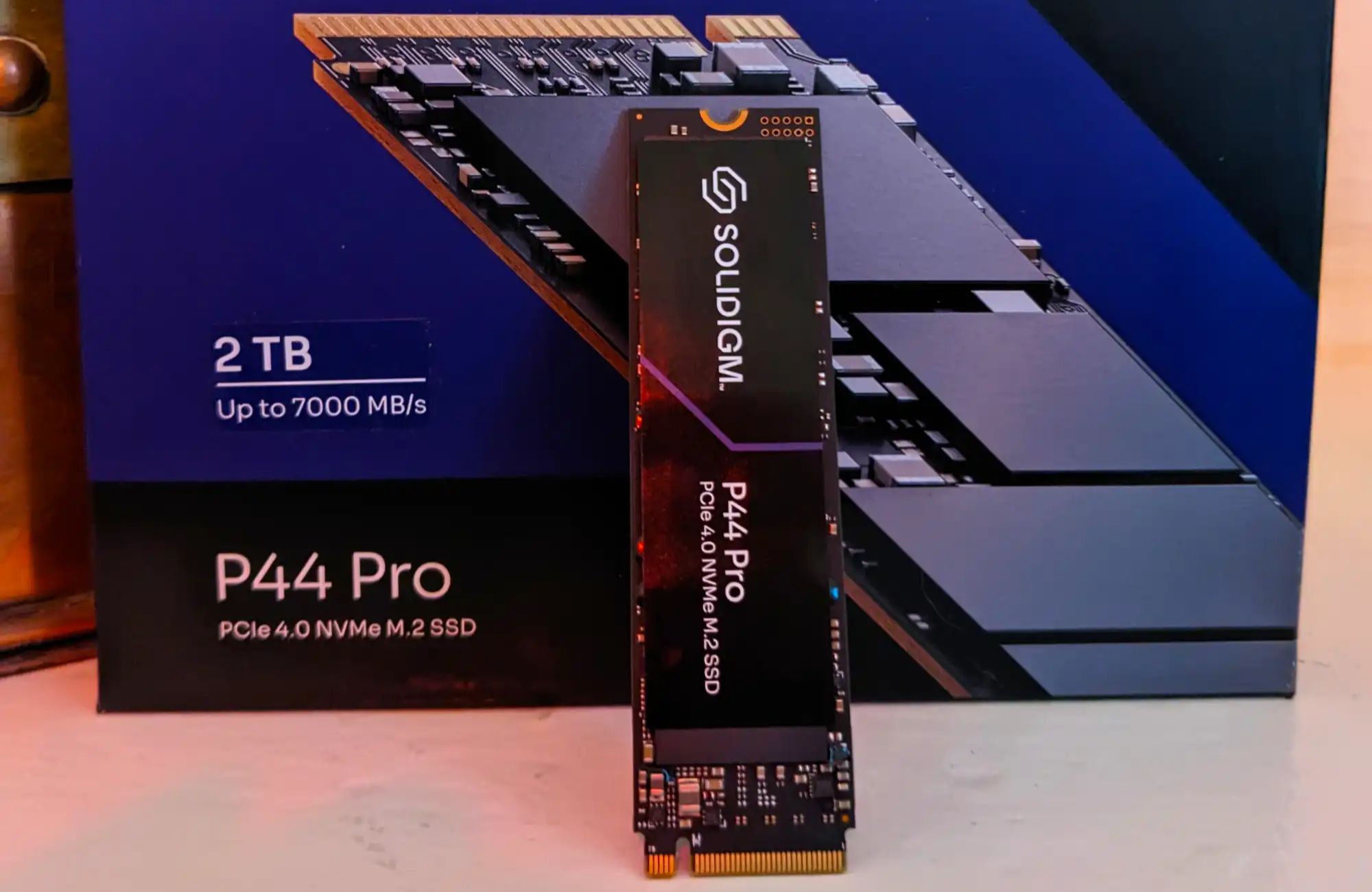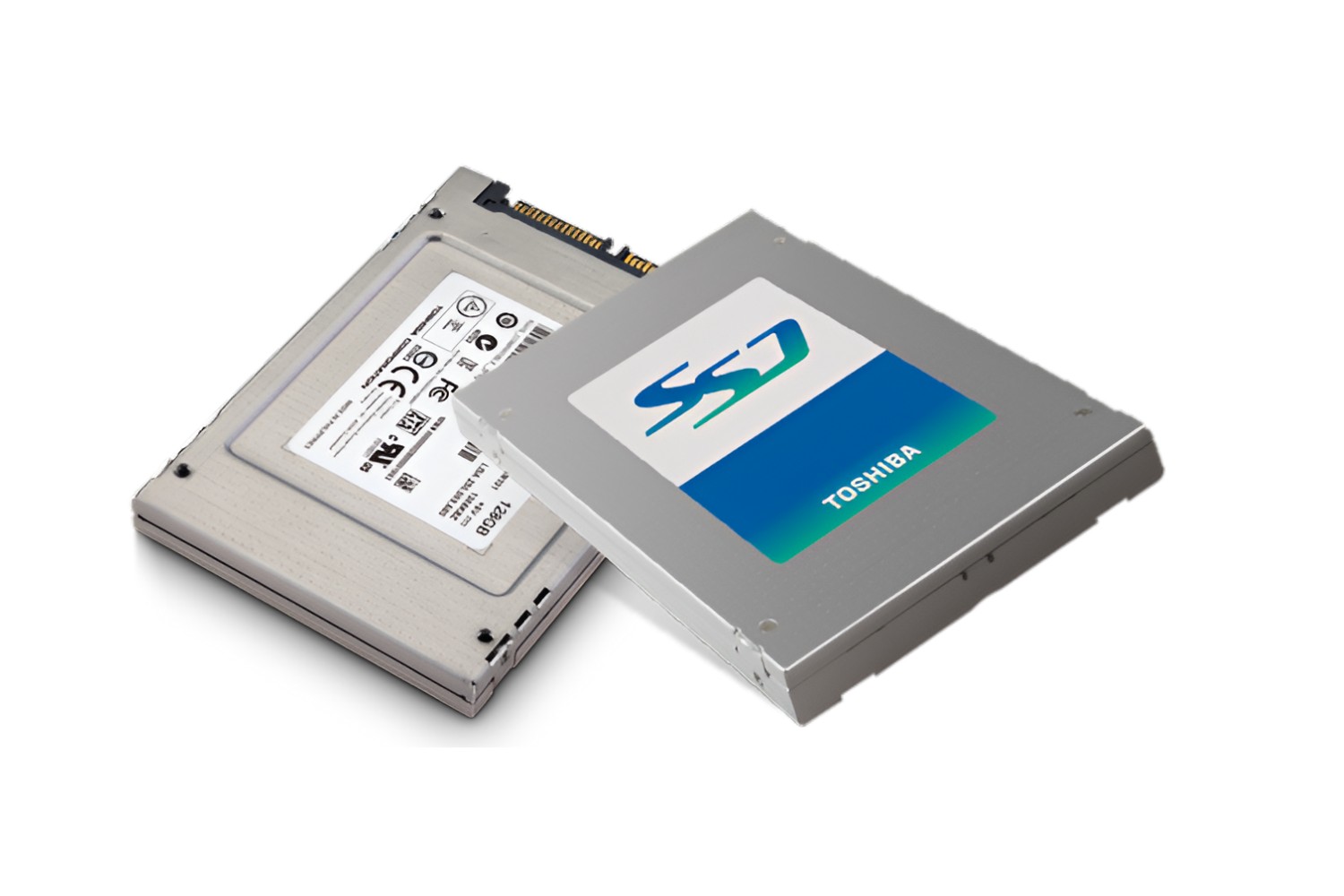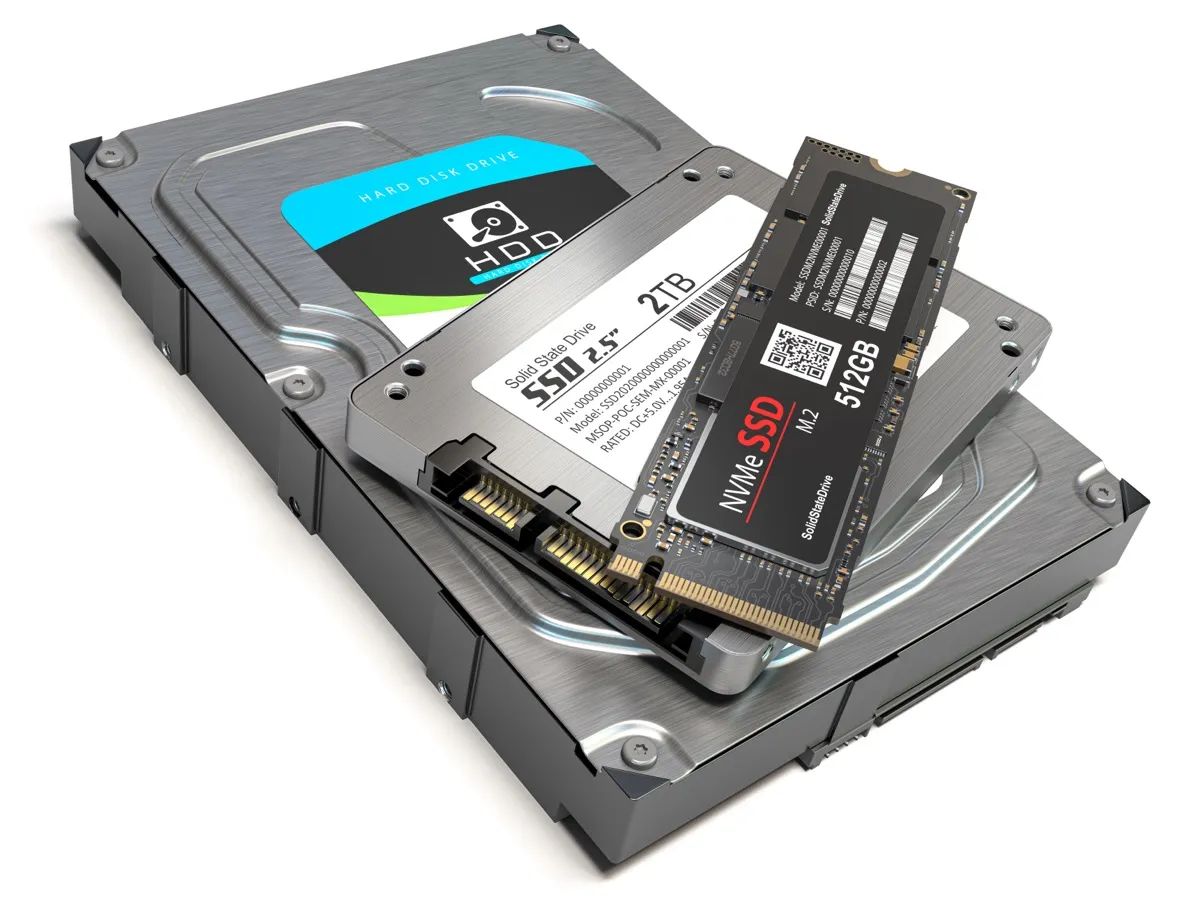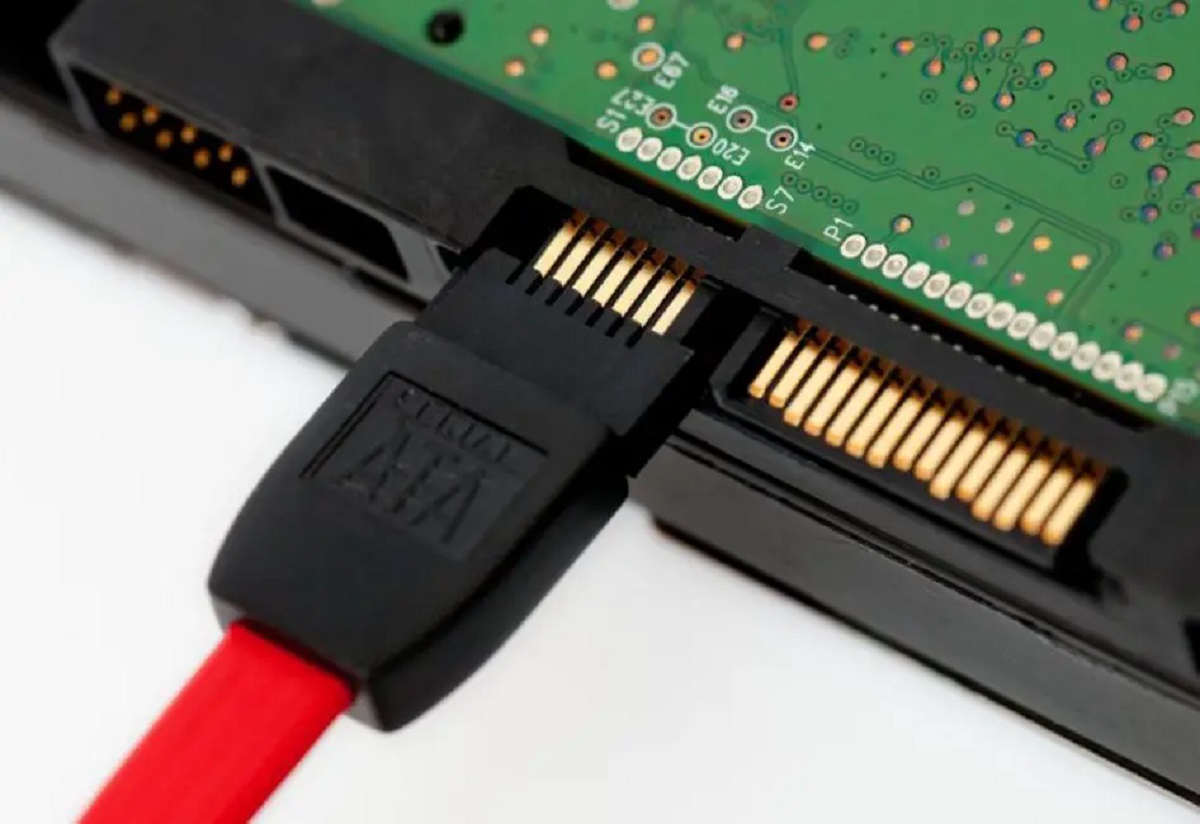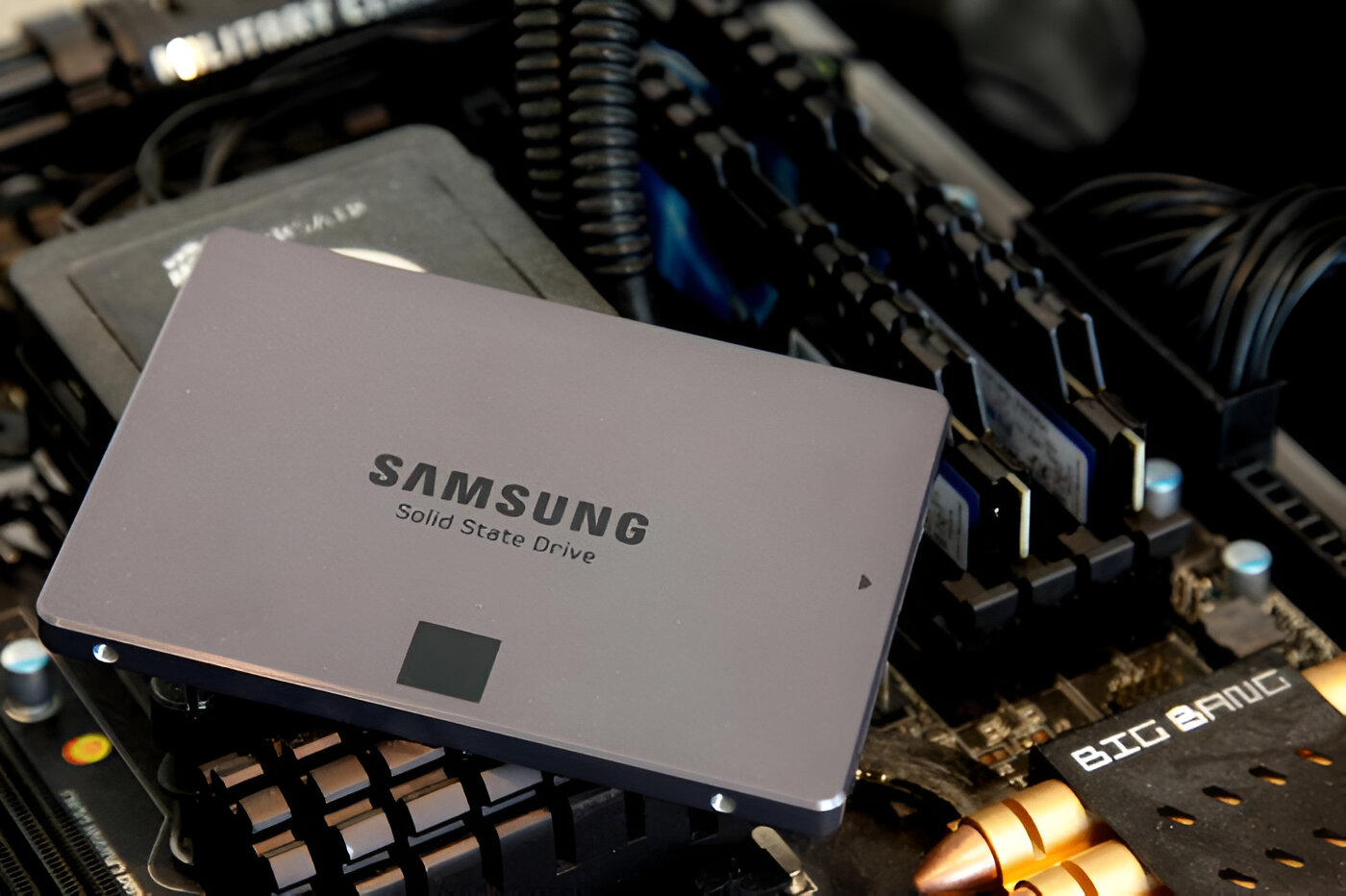Introduction
Welcome to the world of solid state drives (SSDs) – the new frontier in storage technology. As computer systems continue to evolve, traditional hard disk drives (HDDs) are gradually being replaced by SSDs, offering faster speed, higher performance, and improved reliability. Among the different types of SSDs available in the market, the SATA (Serial ATA) SSD has gained significant popularity due to its compatibility, affordability, and ease of installation.
In this article, we will explore the concept of a SATA Solid State Drive, how it works, its advantages, and the key differences between SATA SSDs and other types of SSDs. We will also address some common misconceptions about SATA SSDs and provide insights on choosing the right SATA SSD for your specific needs.
So, if you’re looking to upgrade your storage solution or simply want to learn more about this cutting-edge technology, read on to discover the wonders of SATA SSDs and why they are revolutionizing the way we store and access data.
What is a SATA Solid State Drive?
A SATA Solid State Drive (SSD) is a storage device that stores data using flash memory technology, making it faster, more reliable, and energy-efficient compared to traditional hard disk drives (HDDs). The term “SATA” refers to the interface through which the SSD connects to the computer’s motherboard. SATA SSDs utilize the Serial ATA interface to transfer data between the drive and the computer.
Unlike HDDs that use spinning magnetic disks to read and write data, SATA SSDs have no moving parts. Instead, they rely on NAND flash memory chips, which retain data even when the power is turned off. This design eliminates the risk of mechanical failure, increases the resistance to shock and vibration, and significantly improves the overall lifespan of the drive.
SATA SSDs are available in various form factors, including 2.5-inch drives that can be easily installed in laptops and desktops, as well as M.2 drives that are designed for ultrabooks and other slim devices. They also come in different capacities, ranging from a few hundred gigabytes to several terabytes, allowing users to choose the size that best suits their storage needs.
One of the key advantages of SATA SSDs is their compatibility with existing systems. They can be used as a drop-in replacement for traditional hard drives without requiring any special hardware or software modifications. This makes it easier for users to upgrade their storage solution and enjoy the benefits of SSD technology without extensive technical knowledge.
Furthermore, SATA SSDs offer faster data transfer speeds compared to HDDs. With read and write speeds that can reach up to 550 megabytes per second (MB/s), SATA SSDs can significantly reduce boot times, decrease application loading times, and improve overall system performance. This enhanced speed and responsiveness make SSDs particularly well-suited for tasks that involve heavy data access, such as gaming, multimedia editing, and large file transfers.
In the next section, we will delve into how SATA SSDs work and explore the advantages they bring to the table.
How does a SATA SSD work?
To understand how a SATA Solid State Drive (SSD) works, let’s delve into the technology behind it. At the heart of an SSD are the NAND flash memory chips. These chips store data in the form of electrical charges within memory cells. Each memory cell can hold multiple bits of information, allowing for greater storage capacity in a compact form factor.
When data needs to be read from or written to the SSD, the controller chip inside the drive manages the data flow. The controller acts as the brain of the SSD, orchestrating the movement of data between the flash memory chips and the computer’s motherboard via the SATA interface.
When data is written to the SSD, the controller splits it into small units called pages and stores them in the empty memory cells within the flash memory chips. To ensure efficient usage of the cells and to extend the lifespan of the drive, the controller utilizes a wear-leveling algorithm that evenly distributes data across all available cells.
When data is read from the SSD, the controller retrieves the information from the appropriate memory cells and transfers it to the computer. The lightning-fast access times of SSDs, coupled with their ability to read data from multiple locations simultaneously, contribute to their impressive speed and responsiveness.
Another feature that distinguishes SSDs from HDDs is the lack of a physical read/write head. In HDDs, the read/write head physically moves across spinning magnetic disks to access the data. In contrast, SATA SSDs access data electronically, eliminating the mechanical limitations and latency associated with HDDs.
It is worth mentioning that SATA SSDs can also benefit from a technology called TRIM. TRIM is a feature supported by operating systems that informs the SSD which blocks of data are no longer in use. This allows the SSD to optimize performance and lifespan by erasing and preparing those blocks for future writes.
Overall, the technological advancements in flash memory and controller chips have revolutionized the way data is stored and accessed. SATA SSDs provide a reliable and efficient storage solution that offers significantly faster performance, improved durability, and silent operation, making them the ideal choice for modern computing needs.
Advantages of using a SATA SSD
SATA Solid State Drives (SSDs) offer numerous advantages over traditional hard disk drives (HDDs), making them a preferred storage solution for many users. Let’s explore some of the key benefits of using a SATA SSD:
- Faster Performance: SATA SSDs deliver significantly faster data transfer speeds compared to HDDs. With read and write speeds that can exceed 500 megabytes per second (MB/s), SSDs can drastically reduce boot times, improve application loading times, and enhance overall system responsiveness. Whether you are gaming, editing videos, or multitasking, an SSD can provide a noticeable performance boost.
- Improved Reliability: Since SATA SSDs have no moving parts like HDDs, they are more resistant to shock, vibration, and physical damage. This makes them less prone to mechanical failures and data loss, resulting in improved reliability and peace of mind. Additionally, the absence of moving parts also means that SATA SSDs generate less heat, contributing to their longevity.
- Energy Efficiency: SATA SSDs consume less power than HDDs, making them more energy-efficient. This can translate into longer battery life for laptops and lower electricity bills for desktop PCs. The reduced power consumption also means less heat is generated, resulting in quieter operation and a cooler overall system.
- Compact Design: SATA SSDs are available in various compact form factors, such as 2.5-inch drives and M.2 drives. This makes them suitable for a wide range of devices, including laptops, ultrabooks, mini PCs, and compact desktop systems. The compact design not only saves space but also allows for easier installation and deployment in various computing environments.
- Noiseless Operation: One of the most noticeable advantages of SSDs over HDDs is their silent operation. Without any spinning disks or moving read/write heads, SATA SSDs produce no noise during data access. This makes them ideal for noise-sensitive environments, such as recording studios, libraries, or home offices, where quiet operation is essential.
With these advantages, SATA SSDs have become increasingly popular among users who value speed, reliability, and efficiency. The combination of faster performance, improved reliability, energy efficiency, compact design, and silent operation makes SATA SSDs a compelling choice for anyone seeking to enhance their computing experience.
Differences between SATA SSD and other types of SSDs
While SATA Solid State Drives (SSDs) are a popular choice for users seeking faster and more reliable storage, there are other types of SSDs available that offer different features and performance characteristics. Let’s examine the key differences between SATA SSDs and other types of SSDs:
- Interface: SATA SSDs utilize the Serial ATA interface, which is widely supported and compatible with most computers. On the other hand, other SSDs like NVMe (Non-Volatile Memory Express) SSDs use the PCIe (Peripheral Component Interconnect Express) interface, enabling them to achieve even higher data transfer speeds. NVMe SSDs are typically found in high-end systems and offer superior performance compared to SATA SSDs.
- Speed: SATA SSDs provide faster performance compared to traditional hard disk drives (HDDs) but are generally slower than NVMe SSDs. SATA SSDs typically have read and write speeds ranging from 500 to 550 megabytes per second (MB/s), while NVMe SSDs can reach speeds of several gigabytes per second (GB/s). Therefore, if you require blazing-fast speeds for demanding tasks such as video editing or gaming, an NVMe SSD would be a better choice.
- Form Factor: SATA SSDs are available in standard 2.5-inch drives and M.2 form factors, making them compatible with a wide range of devices. NVMe SSDs, on the other hand, are commonly found in M.2 and PCIe add-in card form factors. The compact size of NVMe SSDs allows them to be installed in ultrabooks and mini PCs, providing high-performance storage in a small footprint.
- Price: SATA SSDs are generally more affordable compared to NVMe SSDs. This price difference is due to their different performance capabilities and underlying technology. SATA SSDs provide a cost-effective solution for users looking to upgrade from HDDs or improve basic computing tasks. NVMe SSDs, while faster, tend to have a higher price point, making them more suitable for professional or power users who require maximum speed and performance.
- Compatibility: SATA SSDs are compatible with a wide range of systems, thanks to their longstanding support in the market. They can easily replace traditional HDDs without the need for any additional hardware or software modifications. On the other hand, NVMe SSDs require systems that support the PCIe interface and may require BIOS or firmware updates to ensure compatibility. Therefore, when choosing between SATA SSDs and NVMe SSDs, it’s important to consider the compatibility of your system.
Understanding the differences between SATA SSDs and other types of SSDs is crucial when considering the specific needs of your computing setup. Whether you prioritize affordability, maximum speed, or compatibility, there is an SSD option available to meet your requirements and enhance your overall system performance.
Common misconceptions about SATA SSDs
Despite the widespread adoption and numerous benefits of SATA Solid State Drives (SSDs), there are still some misconceptions that persist. Let’s debunk some of these common misconceptions and gain a better understanding of SATA SSDs:
- SATA SSDs have limited storage capacity: One misconception is that SATA SSDs have limited storage capacity compared to traditional hard disk drives (HDDs. While it is true that HDDs can offer larger storage capacities at a lower cost per gigabyte, SATA SSDs are available in a wide range of capacities, including terabyte options. Whether you need a smaller capacity for your laptop or a larger capacity for your desktop, there are SATA SSDs to meet your storage needs.
- SATA SSDs are not reliable: Some people perceive SSDs, including SATA SSDs, as being less reliable compared to HDDs because of their use of flash memory technology. However, SSDs have significantly lower failure rates compared to traditional HDDs due to the absence of moving mechanical parts. Advances in NAND flash memory technology have further improved the reliability and durability of SSDs, making them highly dependable storage solutions for everyday use.
- SSDs have limited lifespan: Another common misconception is that SSDs have a limited lifespan and will wear out quickly. While it is true that individual memory cells within an SSD have a limited number of write cycles, modern SSDs, including SATA SSDs, are designed to handle extensive write operations. The use of wear-leveling algorithms and advanced error correction techniques helps distribute write operations evenly across the drive and extend its lifespan. In practical use, the lifespan of a SATA SSD is typically more than sufficient for the average user’s needs.
- SSDs are only meant for high-end systems: Some individuals believe that SSDs, including SATA SSDs, are only suitable for high-end systems or gaming rigs. While it is true that SSDs greatly enhance system performance and can provide a substantial boost to high-demand tasks, SATA SSDs are also an excellent choice for everyday computing needs. They can breathe new life into older systems, improve the boot times and responsiveness of laptops, and provide a smoother overall computing experience.
- SATA SSDs require special drivers or software: Unlike some other types of SSDs, SATA SSDs do not require any special drivers or software to function properly. They are seamlessly compatible with most operating systems and can be used as a direct replacement for HDDs. Simply connect the SATA SSD to the SATA port on your motherboard, and your system should recognize it without any additional configuration. This plug-and-play nature makes SATA SSDs user-friendly and accessible to all users.
By dispelling these misconceptions, we can appreciate the true capabilities and benefits of SATA SSDs. These drives offer reliable storage, high performance, and improved system responsiveness, making them an excellent choice for a wide range of computing needs.
Choosing the right SATA SSD for your needs
When it comes to selecting a SATA Solid State Drive (SSD) for your specific requirements, several factors should be considered to ensure you make an informed decision. Here are some key considerations to keep in mind:
- Storage Capacity: Determine the amount of storage space you require based on your data storage needs. SATA SSDs are available in various capacities, ranging from a few hundred gigabytes to several terabytes. Consider the types of files you will be storing (such as documents, photos, videos, or games) and the approximate size of each file to determine the appropriate capacity for your needs.
- Budget: Set a budget based on your financial constraints. SATA SSDs are generally more affordable compared to other types of SSDs, making them an attractive option for budget-conscious buyers. Determine the maximum amount you are willing to spend and find a SATA SSD within your price range that offers the desired storage capacity and performance.
- Performance: While SATA SSDs offer significant performance improvements over traditional hard disk drives (HDDs), there are variations in performance among different models. Pay attention to factors like read and write speeds, as well as random and sequential performance. If speed is a critical requirement, look for SATA SSDs with higher specifications for optimal performance.
- Brand and Reliability: Consider the reputation and reliability of the SSD brand. Opt for established and reputable manufacturers known for producing high-quality and reliable storage solutions. Reading reviews and doing research can give you an insight into the long-term performance and reliability of the SATA SSDs you are considering.
- Endurance and Warranty: Look for SATA SSDs that offer sufficient endurance and come with a generous warranty. Endurance refers to the amount of data that can be written to the SSD over its lifespan. Higher-endurance SSDs are typically more durable and better suited for heavy workloads. Additionally, a longer warranty provides added protection and peace of mind in case of any unexpected issues.
It’s also worth noting the importance of considering your specific use case. If you are using the SSD for general purposes like web browsing, document editing, and multimedia playback, a mid-range SATA SSD will likely suffice. However, if you engage in resource-intensive tasks such as video editing, gaming, or running virtual machines, you may benefit from a higher-performance SATA SSD.
By carefully considering factors like storage capacity, budget, performance, reliability, endurance, and warranty, you can select the right SATA SSD to meet your unique needs. Remember to compare different models, read reviews, and prioritize the features that align with your specific requirements to make an informed decision and get the most out of your SATA SSD investment.
Installation and compatibility considerations
When it comes to installing a SATA Solid State Drive (SSD) in your system, there are a few considerations to keep in mind to ensure a successful installation and optimal performance. Here are some important factors to consider:
- Physical Installation: SATA SSDs typically come in a 2.5-inch form factor or an M.2 form factor. Before purchasing an SSD, check the specifications of your device or system to determine the compatible form factor. When physically installing the SSD, ensure that you follow proper anti-static precautions and consult your device’s user manual or manufacturer’s website for specific installation instructions.
- SATA Interface: Confirm that your motherboard has a compatible SATA interface. Most modern motherboards have multiple SATA ports, but it’s always a good idea to verify the availability of an open SATA port for connecting your SSD. Additionally, check the SATA version supported by your motherboard (SATA III is the most common) to ensure compatibility and maximum performance.
- Operating System Compatibility: SATA SSDs are compatible with various operating systems, including Windows, macOS, and Linux. However, it’s essential to ensure that your operating system supports the SSD’s features and capabilities. In some cases, you may need to update your operating system or install specific SSD drivers or firmware to optimize performance or enable advanced features like TRIM support.
- Cloning or Fresh Installation: If you are upgrading from a traditional hard disk drive (HDD) to a SATA SSD, you have the option to clone your existing drive or perform a fresh installation of your operating system and applications. Cloning allows you to transfer the data and settings from your old drive to the new SSD, while a fresh installation gives you a clean start. Consider your preferences and the condition of your current drive when deciding which method to use.
- Backup: Before installing a new SATA SSD, it is crucial to backup any important data on your current storage drive. This ensures that you have a copy of your files in case of any unforeseen issues during installation or data migration. It is recommended to create a complete backup of your system using an external storage solution or cloud-based backup service.
If you are unsure about any of these installation and compatibility considerations, it is advisable to consult your device’s manufacturer, review the user manual, or seek guidance from a professional. They can provide specific instructions and ensure a smooth installation process.
By taking the time to consider the physical installation, SATA interface compatibility, operating system support, cloning versus fresh installation choices, and the importance of data backups, you can avoid any potential hiccups and ensure a successful installation of your SATA SSD. Enjoy the benefits of faster performance and improved storage with your new SSD!
Conclusion
In conclusion, SATA Solid State Drives (SSDs) have revolutionized the storage industry, offering faster speeds, improved reliability, and enhanced performance compared to traditional hard disk drives (HDDs). Whether you’re a casual user seeking smoother computing experiences or a professional requiring high-performance storage, SATA SSDs provide an excellent solution that is compatible, affordable, and easy to install.
We explored the concept of SATA SSDs and how they utilize flash memory technology to store and access data. We debunked common misconceptions surrounding these drives, highlighting their reliability, endurance, and compatibility. Furthermore, we discussed the differences between SATA SSDs and other types of SSDs, such as NVMe SSDs, to help you make an informed choice.
Choosing the right SATA SSD involves considering factors such as storage capacity, budget, performance, reliability, endurance, and warranty. By understanding your needs and selecting a reputable brand, you can find a SATA SSD that meets your requirements and provides a noticeable improvement to your system.
We also covered installation and compatibility considerations, stressing the importance of verifying the physical installation requirements, SATA interface compatibility, operating system support, and the necessity of backing up your data before installing the new SSD.
Whether you’re a laptop user looking to boost your device’s performance or a desktop user seeking faster boot times and application responsiveness, a SATA SSD can provide a significant upgrade to your computing experience.
In a world where data is constantly growing and demands for speed and reliability are increasing, SATA SSDs offer a reliable and efficient storage solution for a wide range of users. Embrace the power of SATA SSDs and enjoy faster data access, improved performance, and a more reliable storage experience for all your computing needs.







